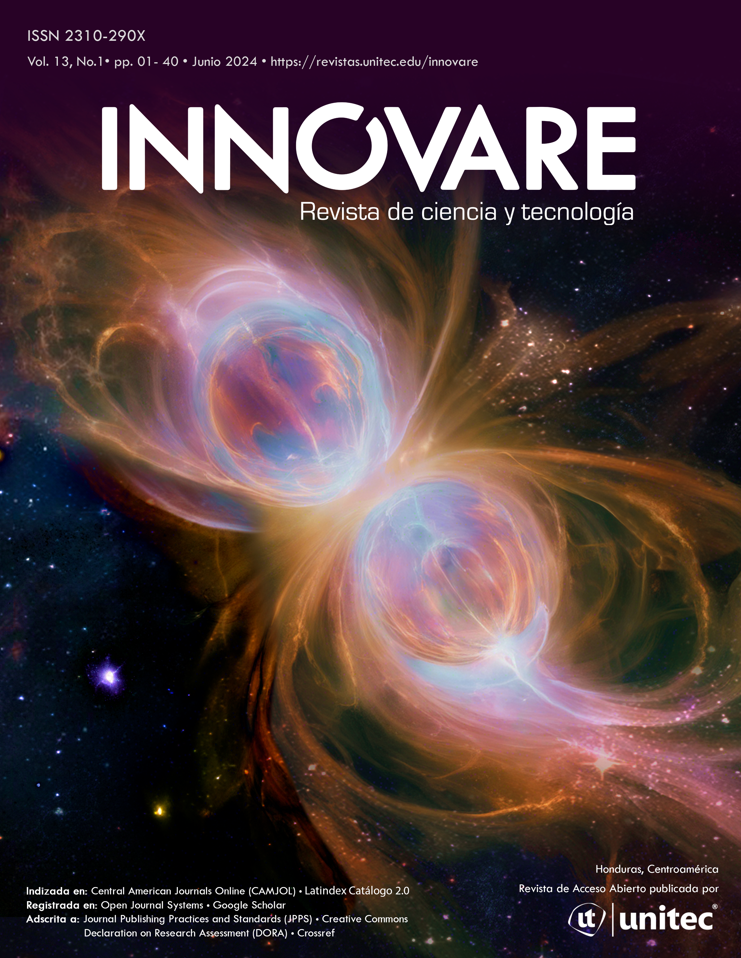Abstract
Concrete is an essential product for the construction industry. The manufacturing process consists of mixing cement, sand, gravel and water. The study aim was to evaluate the concrete resistance by modifying its mixture and replacing the gravel with recycled plastic. Methods. The study was descriptive. The concrete specimens were prepared and compared using compressive strength. Three samples were made, the reference cylinder being the one made up of a conventional concrete mixture, i.e., cement, sand and gravel. The remaining two specimens were made by replacing the gravel with recycled plastic, whose compressive strength was compared with the mixture without modification. Results. The concrete compressive strength and the mixture volumetric weight decreased as there was an increase in the percentage of high-density polyethylene (HDPE), which replaced the gravel. Conclusion. The results suggest that replacing gravel with plastic in the three samples reduces the properties of the concrete in terms of strength and weight. More research is needed to fully understand the effects of adding HDPE to concrete and find ways to mitigate any negative impacts on its properties.References
Al-manaseer, A. A. y Dalal, T. R. (1997). Concrete containing plastic aggregates. Concrete International, 19(8), 47-52.
Arbelaez-Perez, O. F., Venites-Mosquera, J. F., Córdoba-Palacios, Y. M. y Mena-Ramírez, K. P. (2020). Propiedades mecánicas de concretos modificados con plástico marino reciclado en reemplazo de los agregados finos. Revista Politécnica, 16(31), 77-84. https://dx.doi.org/10.33571/rpolitec.v16n31a6
ARGOS. (2022). Esta es la proporción de los materiales para preparar concreto. https://honduras.argos.co/maestro-de-obra/esta-es-la-proporcion-de-los-materiales-para-preparar-concreto/
Argueta, B. (2017, 11 de agosto). Utila posee la primera calle de plástico reciclado en Honduras. Tiempo. https://tiempo.hn/utila-calle-plastico-reciclado-honduras/
ASTM C29/C29M-16. (2017, 16 de febrero). Standard test method for bulk density (“unit weight”) and voids in aggregate. ASTM International. https://www.astm.org/c0029_c0029m-16.html
ASTM C31/C31M-19. (2020, 31 de enero). Standard practice for making and curing concrete test specimens in the field. ASTM International. https://www.astm.org/c0031_c0031m-19.html
ASTM C39/C39M-20. (2021, 9 de marzo). Standard test method for compressive strength of cylindrical concrete specimens. ASTM International. https://www.astm.org/c0039_c0039m-20.html
ASTM D2488-09a. (2017, 18 de agosto). Standard practice for description and identification of soils (visual-manual procedure). ASTM International. https://www.astm.org/d2488-09a.html
Awoyera, P. O., Awobayikun, O., Gobinath, R. y Ugwu, E. I. (2020). Rheological, mineralogical and strength variability of concrete due to construction water impurities. International Journal of Engineering Research in Africa, 48, 78-91. https://dx.doi.org/10.4028/www.scientific.net/JERA.48.78
Babafemi, A. J., Šavija, B., Chandra Paul, S. y Anggraini, V. (2018). Engineering properties of concrete with waste recycled plastic: a review. Sustainability, 10(11), 3875. https://dx.doi.org/10.3390/su10113875
Awoyera, P. O., Awobayikun, O., Gobinath, R. y Ugwu, E. I. (2020). Rheological, mineralogical and strength variability of concrete due to construction water impurities. International Journal of Engineering Research in Africa, 48, 78-91. https://dx.doi.org/10.4028/www.scientific.net/JERA.48.78
Babafemi, A. J., Šavija, B., Chandra Paul, S. y Anggraini, V. (2018). Engineering properties of concrete with waste recycled plastic: a review. Sustainability, 10(11), 3875. https://dx.doi.org/10.3390/su10113875
Bhavani, B., Raju, C. K. y Zaid, S. T. (2018). Effect on mechanical properties of M25 SCC with variation of Class - F fly ash and GGBS. International Journal of ChemTech Research, 11(7), 70-77. https://dx.doi.org/10.20902/IJCTR.2018.110709
Díaz Vega, R. (2021). El plástico biodegradable en Perú: ¿Una solución o un problema? South Sustainability, 2(2), e042. https://dx.doi.org/10.21142/SS-0202-2021-pb004
Domínguez del Águila, D., Paredes Tarazona, M. T. y Hernández Valz, H. M. (2021). Actitud hacia la gestión de residuos sólidos domiciliarios en estudiantes de una universidad privada. Revista del Instituto de investigación de la Facultad de Minas, Metalurgia y Ciencias Geográficas, 24(47), 63-73. https://dx.doi.org/10.15381/iigeo.v24i47.20647
Estrada, G. (2019, 21 de abril). Sacan las botellas del mar en Utila y las usan para asfaltar sus calles. El Heraldo. https://www.elheraldo.hn/especiales/periodismodeimpacto/sacan-las-botellas-del-mar-en-utila-y-las-usan-para-asfaltar-HYEH1275983
García Pacheco, N. E. (2019). Evaluación de las propiedades físicas y mecánicas del concreto con la introducción de fibras de plástico recicladas. Universidad Tecnológica Centroamericana. https://repositorio.unitec.edu/handle/123456789/7371?show=full
Gracomaq. (2017). https://gracomaq.net/web/
Greenpeace. (2024). ¿Cómo llega el plástico a los océanos y que sucede entonces? https://es.greenpeace.org/es/trabajamos-en/consumismo/plasticos/como-llega-el-plastico-a-los-oceanos-y-que-sucede-entonces/
Honduras Tips. (2019). Las calles de plástico en Utila son noticia para el medio digital Intriper de Argentina. https://www.hondurastips.hn/2019/04/27/las-calles-de-plastico-en-utila-son-noticia-para-el-medio-digital-intriper-de-argentina/
Karisma, D. A., Candra, A. I., Ali, M. K. K., Sari, T. S. y Pertiwi, S. A. P. (2022). The optimum vibration of the compressive strength of concrete specimen. INERSIA, 18(2), 217-224. https://dx.doi.org/10.21831/inersia.v18i2.54522
López-Yépez, L. G., Bermúdez, R. A., Uribe-Celiz, S. L., Ospina-Lozano, S. E. y Vázquez-Rodríguez, F. J. (2020). Factibilidad del remplazo de agregados finos reciclados de demolición en las propiedades físicas de concreto estructural. Ingenierias, 23(86), 35-48. https://dx.doi.org/10.29105/ingenierias23.86-5
Metha, K. y Monteiro, P. (1998). Concreto. Estructura, propiedades y materiales. Instituto Mexicano del Cemento y del Concreto A. C.
Park, J.-S., Kim, Y. J., Cho, J.-R. y Jeon, S.-J. (2015). Early-age strength of ultra-high performance concrete in various curing conditions. Materials, 8(8), 5537-5553. https://dx.doi.org/10.3390/ma8085261
Pérez Villarraga, N. y Molano González, L. M. (2020). Estudio de plástico reciclado como agregado en la elaboración de concreto con fibras de acero. Universidad Santo Tomás. http://hdl.handle.net/11634/31344
Portilla-Jiménez, J. G. (2022). Análisis del marco normativo de economía circular en Ecuador orientado al sector de los plásticos. FIGEMPA: Investigación y Desarrollo, 13(1), 38-47. https://dx.doi.org/10.29166/revfig.v13i1.3364
Rahmani, K., Rahmanzadeh, B. y Piroti, S. (2018). Experimental study of the effect of water-cement ratio on compressive strength, abrasion resistance, porosity and permeability of Nano silica concrete. Frattura Ed Integrità Strutturale, 12(44), 16-24. https://dx.doi.org/10.3221/IGF-ESIS.44.02
REPLASTH. (2022). Reciclaje de plásticos Honduras. https://sites.google.com/view/replasth/home
Sanjuán Barbudo, M. Á. y ChinChón Yepes, S. (2014). Introducción a la fabricación y normalización del cemento portland. Universidad de Alicante. https://rua.ua.es/dspace/handle/10045/45347
Solis-Campos, F. y Santa Ana Lozada, P. R. (2022). PEAD reciclado reforzado por fibra de vidrio. Aplicación en cubiertas. Pädi Boletín Científico de Ciencias Básicas e Ingenierías del ICBI, 10(Especial2), 126-135. https://dx.doi.org/10.29057/icbi.v10iEspecial2.8700
Sultan, M. A., Jawad, M., Din, S. U., Cheema, S. M. y Mushtaq, A. (2023). Analysis of the chemical compositions of locally branded manufactured cement of Pakistan. Ecological Engineering & Environmental Technology, 24(3), 147-152. https://dx.doi.org/10.12912/27197050/159729
Usman, A., Sutanto, M. H. y Napiah, M. (2018). Effect of recycled plastic in mortar and concrete and the application of gamma irradiation - A review. E3S Web of Conferences, 65, 05027. https://dx.doi.org/10.1051/e3sconf/20186505027

This work is licensed under a Creative Commons Attribution-NonCommercial-NoDerivatives 4.0 International License.

